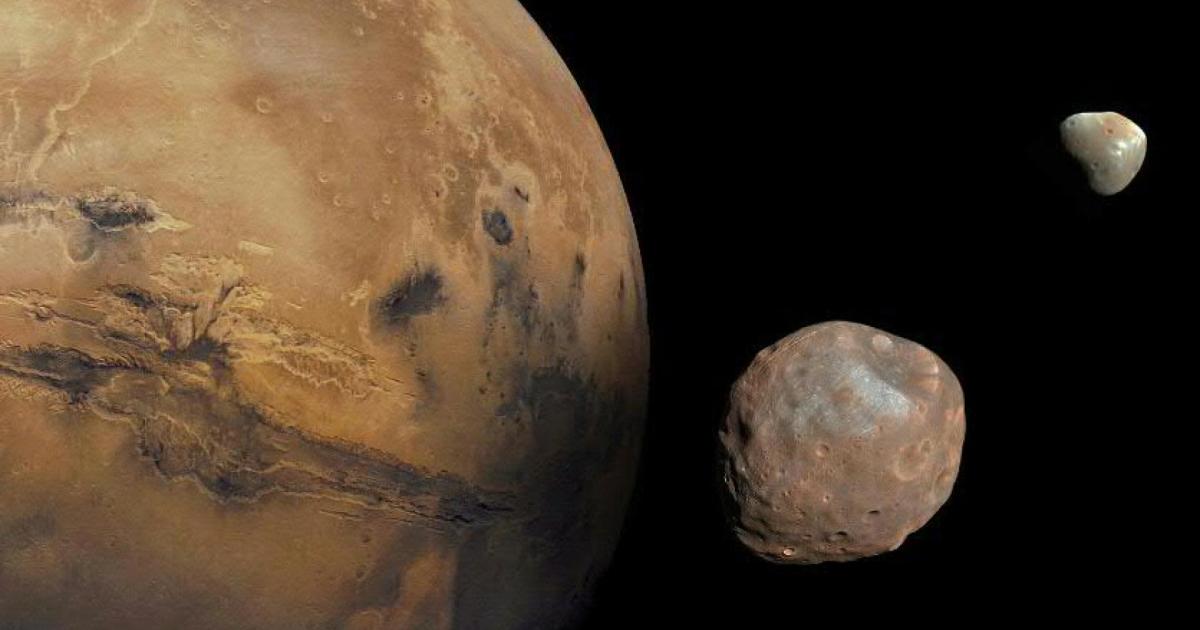
[ad_1]
Since there are no Phobos samples on Earth yet, scientists use rocks similar to those found there and simulate the bombardment of cosmic particles in a vacuum chamber, which causes the material to erode into space.
The experiments could help evaluate the Phobos samples that are expected to be brought to Earth in 2029 as part of Japan’s MMX space mission. The weathering investigation of the Martian moon Phobos is important for understanding its development from its formation to its present appearance, write scientists around Paul Szabo and Friedrich Aumayr of the Institute of Applied Physics at the Technical University (TU) of Vienna in their “Journal of Geophysical Research: Planets” published work. “There are several theories as to how the Mars moon Phobos may have originated,” Szabo said in a broadcast. It may have originally been an asteroid captured from Mars. But it could also have been created when a larger celestial body collided with Mars.
Unlike the earth, where rain and wind affect the rocks, the material on Phobos mainly suffers the bombardment of energetic particles, especially from the solar wind. On earth, the earth’s magnetic field and atmosphere protect against this bombardment.
Chosen for you
Material completely changed by particle bombardment
This bombardment of particles completely changed the material on Phobos for billions of years. To understand the geology of the Mars satellite, it is necessary to be able to correctly evaluate the processes involved in space weather.
To this end, the Viennese researchers conducted experiments with rocks such as those found on Phobos. “As an analog of Phobos we used the mineral augite, which contains 60% oxygen, 20% silicon and magnesium, iron and calcium,” Szabo told the APA. In a vacuum chamber it was bombarded with several charged particles, including oxygen, carbon and carbon dioxide ions.
With the help of extremely precise scales, the researchers were able to measure how much material was removed by the bombardment and which particles impacted the rock. This allowed them to estimate erosion much more accurately than was previously possible.
Chosen for you
Effect of measured oxygen ions
This confirmed that a special effect on Phobos should not be overlooked, because the moon is exposed to particle bombardment in two ways: the celestial body is not only bombarded by ions from the solar wind. The satellite, less than 6,000 kilometers from its planet, which always faces the same side of its planet, is also exposed to considerable bombardment by oxygen ions. They come from the Martian atmosphere and are accelerated to high energies by the solar wind. The effect of these oxygen ions could now be measured for the first time.
The experiments showed that erosion rates from particle bombardment are likely to be lower than previously assumed. Furthermore, no significant differences were observed in the effects of atomic and molecular ions on the rock.
The Japanese space agency JAXA plans to launch a probe as part of the MMX (Martian Moons Exploration) mission in 2024 to explore the Martian moons Phobos and Deimos. It is scheduled to go into orbit around Mars in 2025, land on Phobos, take a soil sample and start over. After several flights over Deimos, the probe is expected to return to Earth in 2029 and deposit a capsule with the Phobos samples on Earth.
Service: http://dx.doi.org/10.1029/2020JE006583
Source link